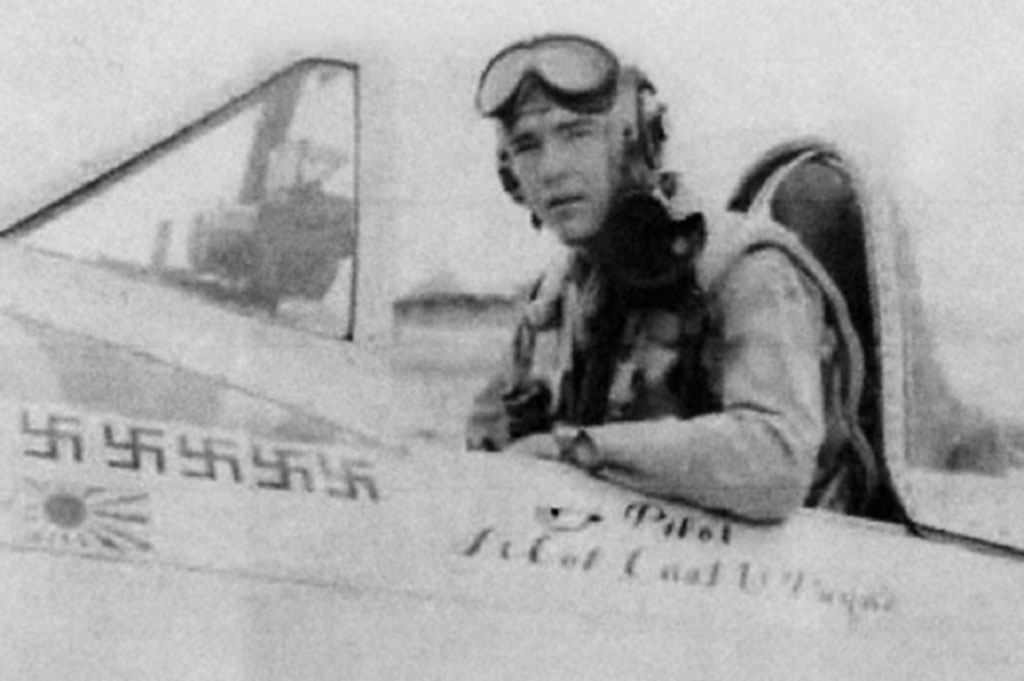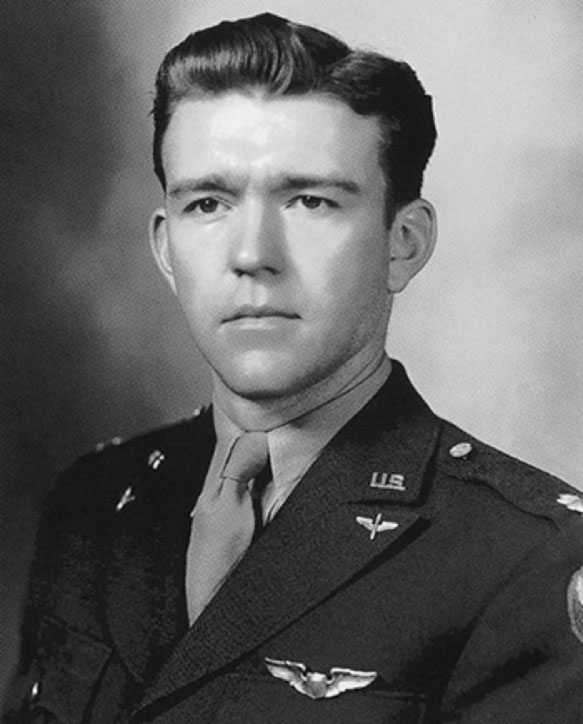
Lt. Col. Carl Payne in his P-47N fighter on the Ie Shime island, 1945. Interestingly, the victory markings below the windshield indicate five German and one Japanese plane shot down, but not his confirmed Italian kill.
Lt. Col. Carl Payne
Carl Payne started his career as a lieutenant with the 309th Pursuit Squadron, 31st Pursuit Group, flying the Spitfire Mk Vb. He flew cover for the abortive Canadian attack on the French port of Dieppe in August 1942, during which he damaged a German Dornier Do-217 bomber. In September the group became the 31st Fighter Group of the 12th Air Force, and in October was on its way to North Africa. On November 8, during Operation Torch, the invasion of French Morocco, Payne scored his first victory: a Vichy French Dewoitine D.520.
As the North African campaign progressed, the 31st followed Allied forces into Tunisia. On March 21, while escorting Douglas A-20 bombers to Kairouan, they caught a flight of 17 German Ju-87 dive bombers. The Stuka was never a match for the Spit. Payne, now a captain, shared credit with Lt. Robert McCarthy for his first Nazi victory. In mid-April the 309th upgraded to the new Spitfire Mk IX. Eight days later, Payne used his to split credit for a Messerschmitt Me-109 with Capt. Frank Hill, and on May 6th claimed a solo kill of a 109 over Tunis.
With North Africa conquered, the Allies conducted an “island hopping” campaign toward Italy, beginning with Pantelleria, an Italian-held fortified island east of Cape Bon. On June 10th the 309th was flying a sweep over its harbor when they spotted 13 Macchi C.202 Folgores attacking Allied bombers. The Spit Mk IX was more than a match for the 202; the Americans shot down six, Payne getting one for his fourth victory, against his third enemy power.
At the beginning of July the 309th flew top cover for the invasion of Sicily. The day after the landings Payne claimed an FW-190 (later assessed as an Me-109) to become an ace. Four days later he was given command of the 309th, but not long afterward he rotated home to take command of the 34th Fighter Squadron, 413th Fighter Group, flying the long-range Republic P-47N Thunderbolt. In the May 20, 1944 issue of the Saturday Evening Post, Major Payne was featured in an Army Air Force recruiting ad, his score given as “five and one half enemy planes destroyed, one probably destroyed and seven damaged. Yet neither he nor his plane has ever been scratched!” (Oddly, the ad also features a P-38 Lightning, a type Payne never flew.)
In May 1945 the 413th shipped out to Ie Shima (modern Iejima) in the Ryuku Islands during the Battle of Okinawa. At this point American pilots' main job there was intercepting kamikaze raids, which became fewer as the war dragged out. The Bomb had already been dropped on Hiroshima when Payne shot down an A6M Zero. He finished the war with a score of six destroyed, one probable, and five damaged, making him only pilot in the Army Air Forces during World War II to shoot down enemy aircraft of four different nations. He stayed in the USAF after the war, and was Commanding Officer of the 6604th Air Base Wing at Pepperrell AFB St. John's, Newfoundland, Canada, when he died in an unexplained crash of his Lockheed T-33 jet on January 9, 1956.
